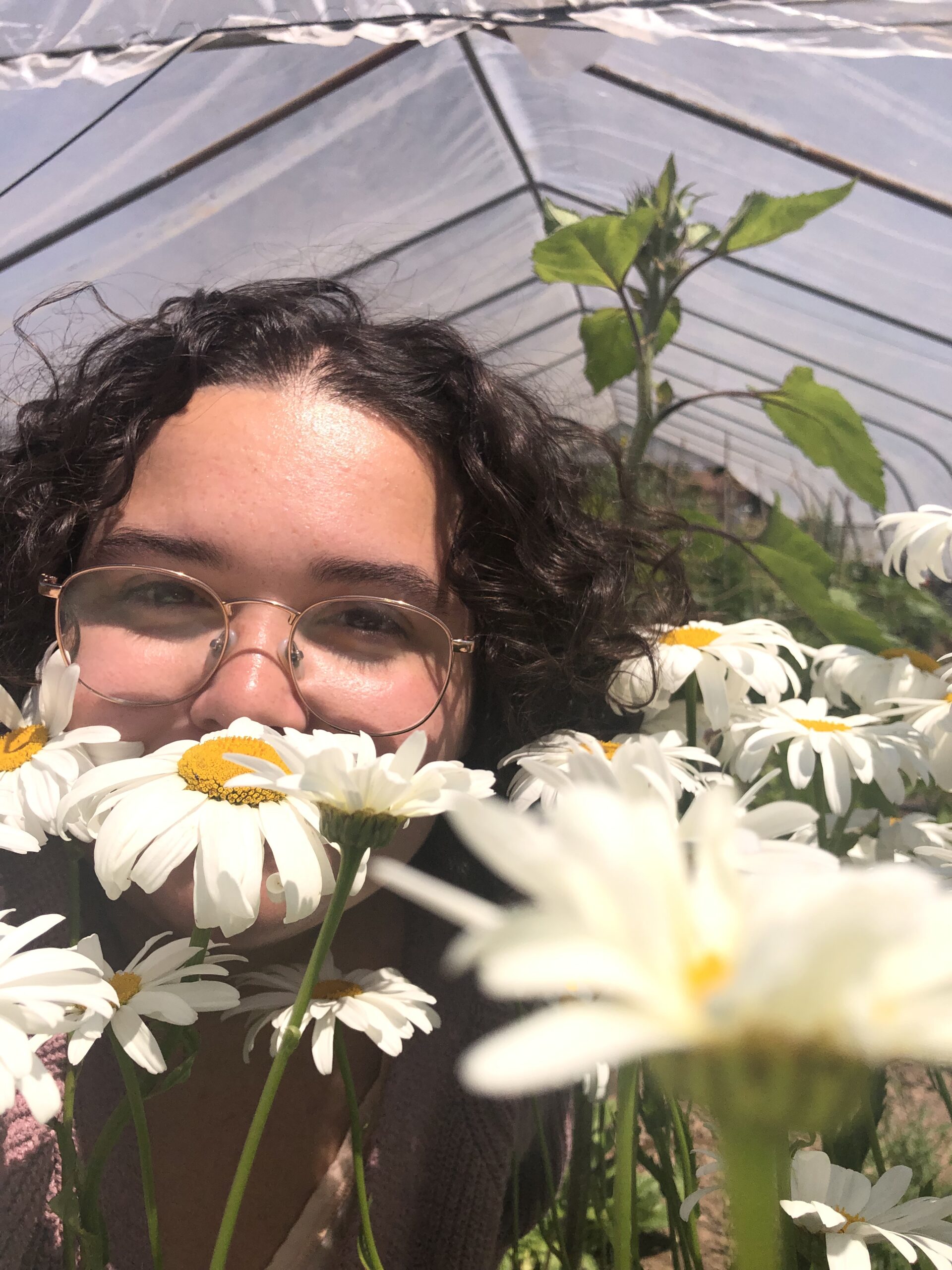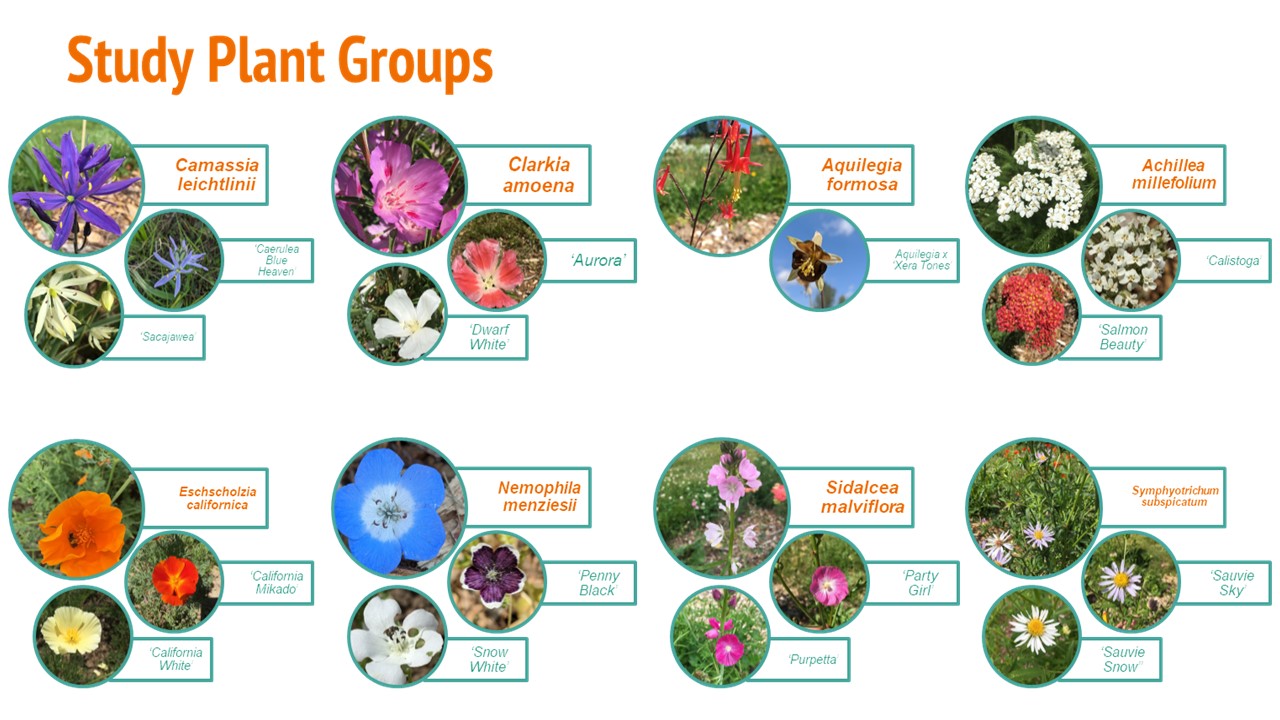It has been a busy summer in the Garden Ecology Lab!
- Mykl Nelson successfully defended his thesis on urban garden soils, and graduated with a M.S. in Horticulture this past June.
- Gail, Aaron, and Mykl all shared their research results with Master Gardeners, at the recent Growing Gardeners conference.
- Aaron continues his fieldwork, documenting the attractiveness of several Willamette Valley native plants to pollinators. You can find his full list of plants here.
- Aaron launched the survey part of his research, to document the attractiveness of these same plants to gardeners. If you would like to participate, you can find our recruitment letter, here.
- Gail and Isabella continue to sample insects on a monthly basis, from 24 Portland area gardens. Our July sample has been pushed to the week of July 30th, because Gail was invited to serve as a panelist on a USDA grant panel. Sampling takes four long days ~ made all the more difficult by Portland’s heat wave. But, sampling during the heat wave will be interesting. Do garden habitats become even more important to bees, when the heat dries up forage in natural and wild habitats? We shall see.
- Bees from our 2017 sampling effort have been pinned, labelled, and sent to the American Museum of Natural History for expert identification. Thank you to the Oregon Master Gardener Association for a $500 grant to help pay for the expert bee identification.
Today, I’m packing field supplies and clothes for the July 30-August 2nd garden bee sampling effort. It seemed like a good time to provide an update on our garden soils work. I wrote this article for the Hardy Plant Society of Oregon quarterly magazine. I thought that others who are interested in garden ecology might be interested in seeing an update on this work. We are currently working on a manuscript of Mykl’s research, for submission to the journal Urban Ecosystems. In the meantime, some of the highlights can be found below.
**********************
Despite the popularity of urban agriculture, we know virtually nothing about urban agricultural soils, including residential vegetable gardens. We thus studied urban garden soils to get a sense of the characteristics of residential-scale, urban agricultural soils in western Oregon. Last year, we took soil samples from 27 vegetable gardens in Corvallis and Portland, and tested for differences between garden sites based upon bed-type (e.g. raised beds versus in-ground beds). All gardens were managed by certified Extension Master Gardeners.
If you have taken a Master Gardener soils class, perhaps you have heard the soil management mantra ‘just add organic matter!’. This mantra comes from the idea that adding more organic matter (OM) can improve soil tilth and nutrition. However, this mantra was derived from research in large-scale farming systems, where farmers often struggle to raise their soil OM by even 1%, across tens or hundreds of acres of crop production.
We found that nearly every garden that we sampled had an excess of OM (Table 1). Soil management guidelines suggest that farmers should aim for 3-6% soil OM. Across all of our garden study sites, vegetable garden soils were on average 13% OM, by volume. Raised beds were significantly over-enriched in organic matter (15% OM, on average), compared to in-ground beds (10% OM, on average). To put it another way, Master Gardener-tended vegetable gardens were over-enriched in OM by 2-5 times the recommended level!
This excess in organic matter likely contributed to excessive levels of other soil parameters. For example, most garden study sites were above recommended levels for electrical conductivity (a measure of soil ‘salts’). All gardens were above recommended levels for sulfur (S), phosphorus (P), calcium (Ca), and magnesium (Mg) (Table 1). Only nitrogen (N), potassium (K), and boron (B) were generally within recommended levels (Table 1).
Table 1. Percent of garden study sites that were within, above, and below recommended ranges for various soil parameters. OM: organic matter. EC: electrical conductivity. N: nitrogen. S: sulfur. P: phosphorus. K: potassium. Ca: calcium. Mg: magnesium. B: boron.
| Soil Parameter | Percent of Garden Study Sites | ||
| Within Recommended Range | Above Recommended range | Below Recommended Range | |
| OM | 6% | 94% | 0% |
| EC | 18% | 82% | 0% |
| N | 70% | 30% | 0% |
| S | 0% | 100% | 0% |
| P | 0% | 100% | 0% |
| K | 73% | 24% | 3% |
| Ca | 0% | 100% | 0% |
| Mg | 0% | 100% | 0% |
| B | 42% | 3% | 55% |
The excessive organic matter in residential-scale garden soils makes sense, when considered in the context of garden size. In small garden plots, gardeners can easily over-apply products which have been recommended for successful, large-scale, agricultural production. It is easy to imagine that the over-abundance of organic matter in soils results from large amounts of compost added to a relatively small area.
Our results point to the importance of conducting periodic soil tests in garden soils. Instead of ‘just adding organic matter’, gardeners need to understand where they are starting from, before adding amendments and fertilizers to their soil. Apply focused applications of specific nutrients (such as boron or nitrogen) to correct nutrient deficiencies, as needed, while avoiding additions of nutrients that are at relatively high levels. For example, nitrogen is extremely mobile in soils, while phosphorus tends to build up over time. Adding focused applications of synthetic (15-0-0) or organic nitrogen (in the form of feather meal) can help meet crop needs without providing excessive amounts of phosphorus, over time. Gardeners who annually apply organic matter to their soils, without the benefit of a soil test, may be unintentionally adding too much phosphorus to their soils. Soils with excessive micronutrients may hinder plant growth. Soils with excessive phosphorus might contribute to water quality issues in their watershed. Excessive phosphorus also harms or kill beneficial mycorrhizal fungi.





